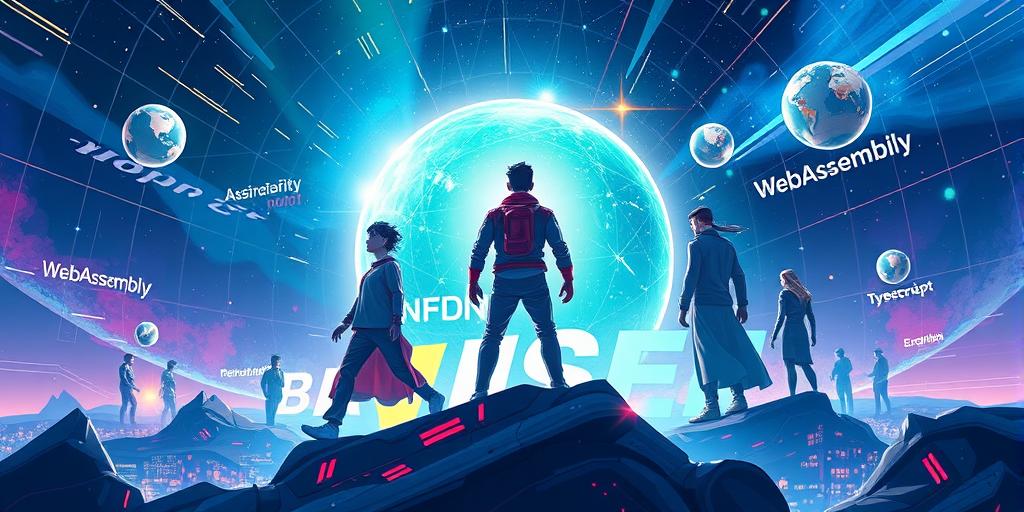Is JavaScript Still the Best Language for Web Development?
So, you’re diving into the captivating world of web development, and naturally, you’re asking – is JavaScript still king? The answer, my friend, is a resounding…maybe! It’s a bit more nuanced than a simple yes or no. JavaScript remains incredibly influential, a cornerstone of modern web development, but the landscape has evolved, and some fantastic alternatives have emerged. Prepare to uncover the truth behind this programming language’s continued dominance (and its potential challengers) in the thrilling world of front-end and back-end development!
JavaScript’s Enduring Reign: Why It Still Matters
JavaScript’s longevity in the web development world isn’t merely a matter of inertia. Its continued relevance stems from several key factors that ensure its position as a top contender. Its vast ecosystem offers a plethora of frameworks and libraries, supporting everything from complex web applications to simple interactive elements. From React and Angular to Vue.js and Node.js, developers have access to a rich set of tools to build almost anything imaginable.
The Ubiquity of JavaScript Frameworks
The dominance of JavaScript frameworks like React, Angular, and Vue.js underscores its ongoing importance. These frameworks provide structure, simplifying the process of building intricate web applications and speeding up development time significantly. React’s component-based architecture is incredibly popular for its flexibility and reusability, while Angular’s comprehensive structure is well-suited for large projects. Vue.js offers a gentler learning curve, making it an ideal choice for beginners.
The Power of Node.js for Back-End Development
Once primarily associated with front-end development, JavaScript’s capabilities have expanded massively. Node.js, a JavaScript runtime environment, has empowered developers to use JavaScript for back-end development as well, leading to a full-stack JavaScript development approach. This unified approach offers significant advantages in terms of consistency, developer efficiency, and reduced context switching.
A Thriving Community and Constant Innovation
JavaScript boasts one of the largest and most active developer communities worldwide. This translates into abundant resources, continuous updates, excellent support, and a constantly evolving set of best practices. The constant innovation keeps the language fresh and relevant, adapting to the ever-changing needs of web developers.
The Rise of Competitors: Challenging JavaScript’s Throne?
While JavaScript remains a dominant force, its position isn’t unchallenged. New languages and frameworks constantly emerge, aiming to improve upon aspects of JavaScript’s development process. Here are some notable contenders:
WebAssembly: A Powerful Challenger
WebAssembly (Wasm) is a binary instruction format designed for high-performance applications in web browsers. It’s not intended to replace JavaScript entirely but rather to complement it, enhancing performance for computationally intensive tasks. This makes Wasm a particularly compelling option for game development, audio/video processing, and other demanding applications.
TypeScript: Adding Structure and Type Safety
TypeScript, a superset of JavaScript, adds optional static typing, enhancing code maintainability and reducing runtime errors. While many developers find the flexibility of JavaScript appealing, TypeScript provides an added layer of structure beneficial for large projects and teams. This structural enhancement is an attractive alternative for developers seeking increased code robustness and predictability.
Other Languages and Frameworks
Beyond WebAssembly and TypeScript, other languages and frameworks contribute to the increasingly diverse world of web development. These include Dart (used in Flutter for cross-platform app development), Kotlin (gaining traction on the server-side), and others. Each language offers its own unique strengths and weaknesses, making the selection process an important consideration for individual development requirements.
Making the Right Choice for Your Next Project
The “best” language is subjective and context-dependent. JavaScript’s versatility and immense ecosystem continue to make it a top choice for numerous web development projects. However, consider your project’s specific requirements, performance needs, team expertise, and the long-term maintainability of your codebase. Weigh the advantages of JavaScript against emerging contenders like WebAssembly and TypeScript. A careful evaluation will ensure that you choose the optimal language for your specific project and development objectives.
Factors to Consider When Choosing
Choosing a programming language involves careful consideration of various factors: project complexity, performance requirements, the team’s skillset, available resources, and long-term maintainability. The optimal language choice depends on the harmonious interplay of these elements. A well-informed decision ensures successful project completion and sustainable long-term development.
The Verdict: JavaScript’s Future Remains Bright
Even with the rise of competitors, JavaScript’s reign as a leading web development language isn’t over yet. Its extensive ecosystem, large community, and continued innovation ensure its relevance in the years to come. While other languages offer compelling alternatives for specific tasks and project needs, JavaScript will likely remain a cornerstone of web development for the foreseeable future. So, embrace the power of JavaScript and embark on your web development journey with confidence! Start building today!




